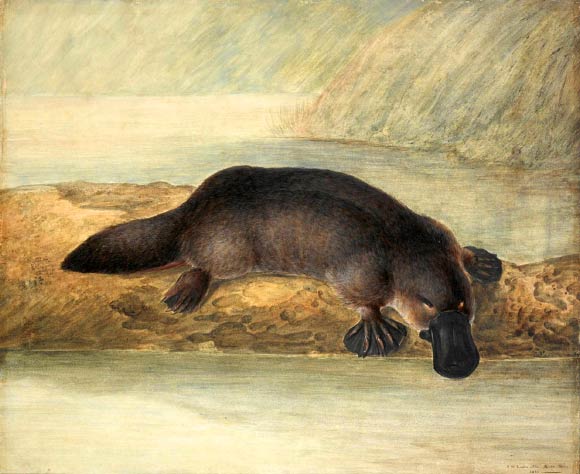The same hormone produced in the gut of the duck-billed platypus (Ornithorhynchus anatinus) to regulate blood glucose is also produced in the animal’s venom, a team of scientists led by University of Adelaide researchers has found — and that hormone could be used in new treatments for type 2 diabetes.
The hormone in question is called GLP-1 (glucagons-like peptide 1). It is normally secreted in the gut of both humans and animals, stimulating the release of insulin to lower blood glucose.
“In humans GLP-1 and gastric inhibitory polypeptide (GIP) are the only known insulin stimulating incretin hormones and are released from intestinal cells after food intake,” the researchers said.
“GLP-1 potentiates glucose-stimulated insulin secretion from pancreatic beta cells and promotes their survival. It acts through the GLP-1 receptor expressed in the pancreas, brain and other peripheral tissues.”
But GLP-1 typically degrades within minutes. In people with type 2 diabetes, the short stimulus triggered by the hormone isn’t sufficient to maintain a proper blood sugar balance.
As a result, medication that includes a longer lasting form of GLP-1 is needed to help provide an extended release of insulin.
“Our team has discovered that monotremes — echidnas (Zaglossus sp.) and platypus — have evolved changes in the hormone GLP-1 that make it resistant to the rapid degradation normally seen in humans,” said co-lead author Prof. Frank Grutzner, from the University of Adelaide’s Robinson Research Institute.
“We’ve found that GLP-1 is degraded in monotremes by a completely different mechanism.”
“Further analysis of the genetics of monotremes reveals that there seems to be a kind of molecular warfare going on between the function of GLP-1, which is produced in the gut but surprisingly also in their venom,” he added.
The authors discovered conflicting functions of GLP-1 in the platypus: in the gut as a regulator of blood glucose, and in venom to fend off other platypus males during breeding season.
“This tug of war between the different functions has resulted in dramatic changes in the GLP-1 system,” said co-lead author Dr. Briony Forbes, from the University of Adelaide’s Robinson Research Institute and Flinders University’s School of Medicine.
“The function in venom has most likely triggered the evolution of a stable form of GLP-1 in monotremes.”
“Excitingly, stable GLP-1 molecules are highly desirable as potential type 2 diabetes treatments.”
GLP-1 has also been discovered in the venom of echidnas. But while the platypus has spurs on its hind limbs for delivering a large amount of venom to its opponent, there is no such spur on echidnas.
“The lack of a spur on echidnas remains an evolutionary mystery, but the fact that both platypus and echidnas have evolved the same long-lasting form of the hormone GLP-1 is in itself a very exciting finding,” Prof. Grutzner said.
The team’s findings were published online Nov. 29 in the journal Scientific Reports.
_____
Enkhjargal Tsend-Ayush et al. 2016. Monotreme glucagon-like peptide-1 in venom and gut: one gene – two very different functions. Scientific Reports 6, article number: 37744; doi: 10.1038/srep37744








